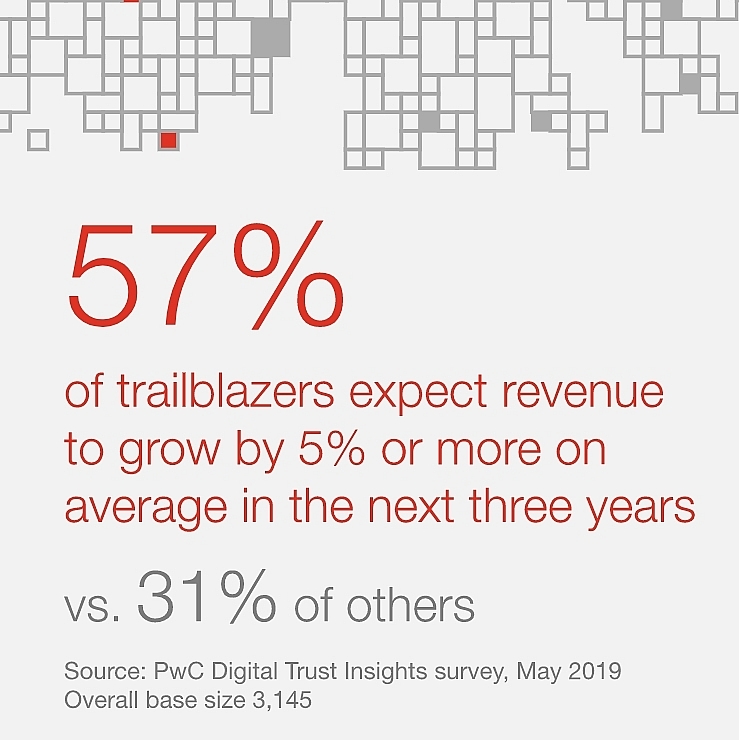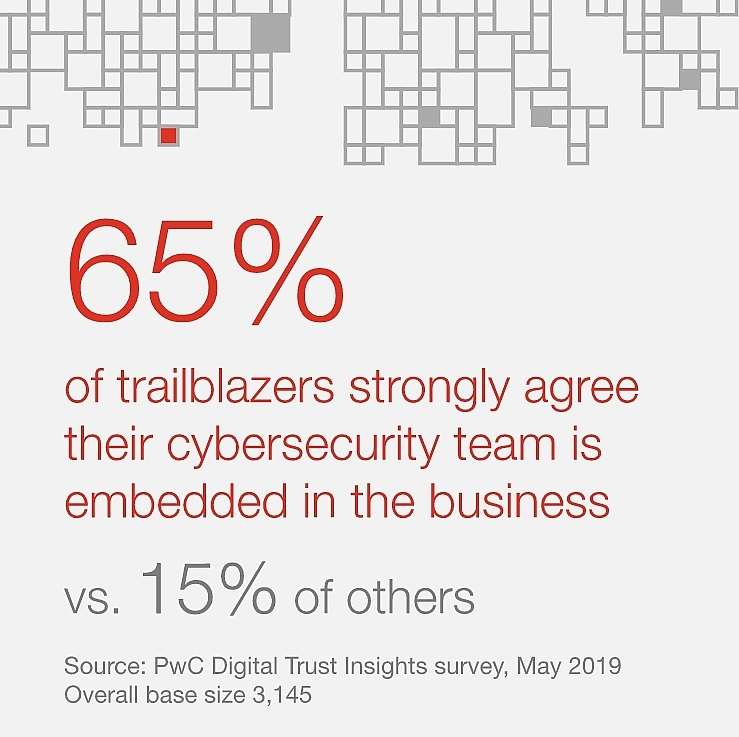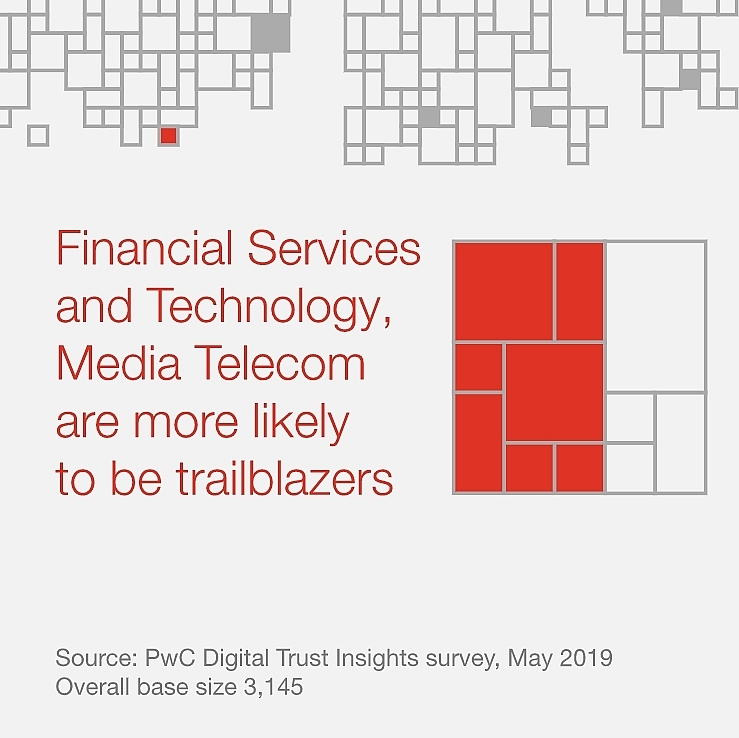 |
The global survey of more than 3,000 executives and IT professionals worldwide found that the top 25 per cent of all respondents – market leaders known as “trailblazers” – are not only leading the way on cybersecurity but also delivering more value and better business outcomes.
Many of these trailblazers say that growing revenue is the top value sought from digital transformation efforts. Nearly nine in 10 trailblazers say they are getting a payoff that meets or exceeds their expectations (compared to 66 per cent of the other respondents).
Trailblazers are also significantly more optimistic about the potential growth in revenue and profit margin for their companies, with 57 per cent expecting revenue to grow by 5 per cent or more, and 53 per cent expecting profit margin to grow by 5 per cent or more.
 |
The survey revealed key demographic information about trailblazers. Many are large companies; 38 per cent of respondents from companies worth at least $1 billion are trailblazers.
The financial services (FS) industry and the technology, media, and telecommunications (TMT) sector are particularly well represented in the leader group. Thirty-three per cent of FS respondents and 30 per cent of TMT respondents are trailblazers, compared to roughly a quarter of the survey base in other industries.
Geographically, just 21 per cent of EMEA (Europe, the Middle East and Africa) respondents are trailblazers, compared to 30 per cent in the Americas, and 30 per cent in Asia Pacific.
 |
The leading behaviours that set trailblazers apart from their corporate peers include aligning their business and cybersecurity strategies, taking a risk-based approach, and coordinating their teams that manage risk.
Key findings from PwC’s Digital Trust Insights survey illustrate the edge that trailblazers maintain in all three areas:
Connected on strategy: 65 per cent of trailblazers strongly agree their cybersecurity team is embedded in the business, conversant in the organisation’s business strategy and has a cybersecurity strategy that supports business imperatives (vs. 15 per cent of others).
Connected on a risk-based approach: 89 per cent of trailblazers say their cybersecurity teams are consistently involved in managing the risks inherent in the organisation’s business transformation or digital initiatives (vs. 41 per cent of others).
Coordinated in execution: 77 per cent of trailblazers strongly agree their cybersecurity team has sufficient interaction with senior leaders to develop an understanding of the company’s risk appetite around core business practices (vs. 22 per cent of others).
“By focusing on building digital trust, trailblazers are driving more proactive, pre-emptive and responsive actions to embed these strategies into the business, as opposed to their peers who primarily look to minimise the operational impacts of cyber threats in reactive manner,” comments TR Kane, PwC US Strategy, Transformation & Risk leader.
The financial services industry and the technology, media, and telecommunications sector are particularly well represented in the leader group.
More than eight in 10 trailblazers say they have anticipated a new cyber risk to digital initiatives and managed it before it affected their partners or customers (compared to six in 10 of others).
“Organisations that take a proactive approach to cybersecurity and embed it into every corporate action will be best placed to deliver the advantages of digital transformation, manage related risks and build trust,” adds Grant Waterfall, EMEA Cybersecurity and Privacy leader, PwC UK.
“Our research highlights the need for organisations to embed their cybersecurity teams within the business to support strategic goals. It’s not just about protecting assets – it’s about being a strategic partner in the organisation,” adds Paul O’Rourke, Asia Pacific Cybersecurity and Privacy leader, PwC Australia.
 Tiếng Việt
Tiếng Việt 普通话
普通话




